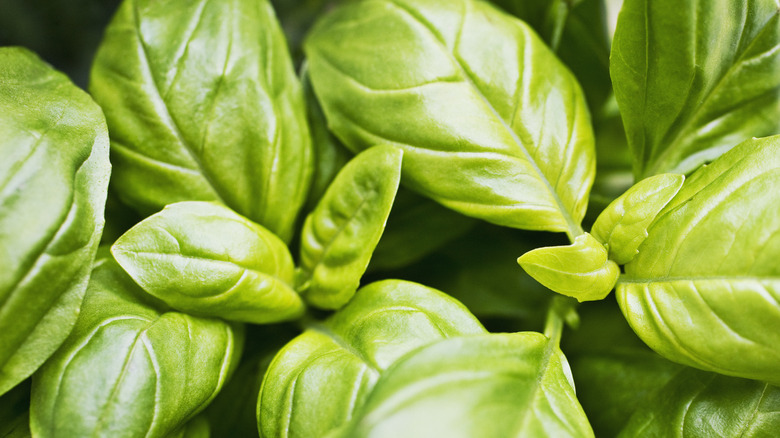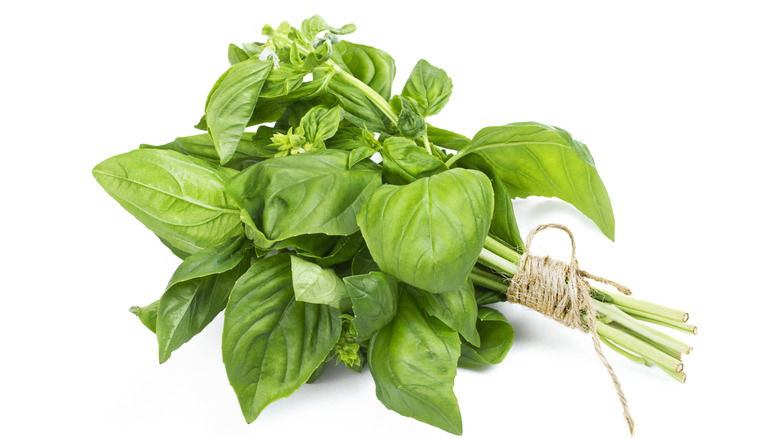How To Choose The Tastiest Basil At The Grocery Store
Commonly associated with Italian food, fresh basil is used in many cuisines. A dozen varieties are widely sold at greenhouses, from the broad-leafed Genovese type often used for pesto to lemon, lime, purple, and Thai sweet basil commonly found in Asian dishes.
Basil is one of the easiest herbs to grow and is a terrific companion to tomatoes if you have the space. Since the herb requires sundrenched soil and consistent temperatures above 50 degrees Fahrenheit, most of us rely on the grocery store to get our fix. To purchase the most flavorful plant, pay attention to a few characteristics.
Whether purchasing basil sealed in a blister pack, still growing in a windowsill pot, or as a dirty bundle from the farmers market, familiarize yourself with what that variety should look and smell like. Pick a fragrant plant with unbruised, bright leaves, avoiding plants that seem dry or show signs of insects feasting.
Although the commonly sold variety, sweet basil, should have bright green leaves, other types can be bronze or violet. Similarly, not all varieties smell the same. Most basil has an unforgettable minty aroma when torn or chopped, but other types taste and smell slightly different. When handled, Thai sweet basil has a licorice aroma, and cinnamon basil has a hint of cinnamon.
If you can find different varieties, it's fun to experiment. Basil can be used in sweet and savory dishes and makes a delicious tequila cocktail around five o'clock.
How to store fresh basil
Fresh basil should last a week if properly stored. Small blister packs of leaves don't require attention but only last a few days. Purchasing herb bundles with stems is better.
There are a few ways to extend basil's life, requiring a bit of prep. If the basil has long stems, treat it like a flower arrangement and place it in a glass with water. Like roses, trim the bottoms and change the water every two days to keep them lasting longer.
For shorter bunches, rinse the basil in cold water and gently remove any excess water (which will cause the basil to rot quickly). Use a salad spinner or blot them with clean dish towels, careful not to bruise the leaves. Place the basil in a single layer on a paper towel and roll them like a cigar, trapping the leaves in a pinwheel. Store the bundle in a resealable baggie in the refrigerator. Change the paper towel every few days to keep the basil dry.
Unlike woodsy herbs like rosemary and oregano, which are excellent when dried, basil is best when fresh. If you must store it long-term, freezing is the best method. The basil will lose some potency but can still be used in cooking. Place whole or chopped leaves in resealable baggies or fill ice cube trays covering the herb with olive oil. Once frozen, the cubes can be popped out and kept in a baggie.


